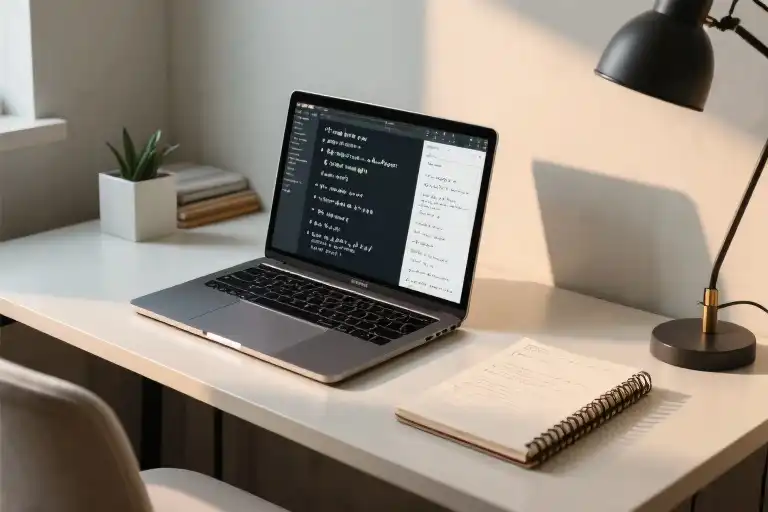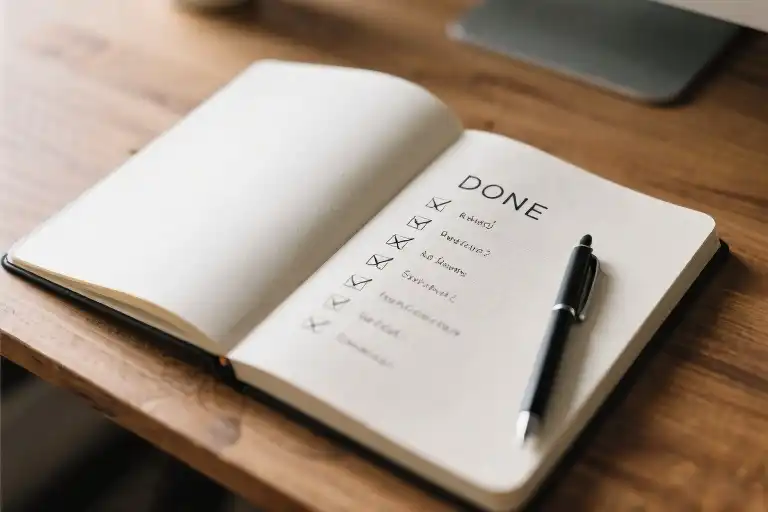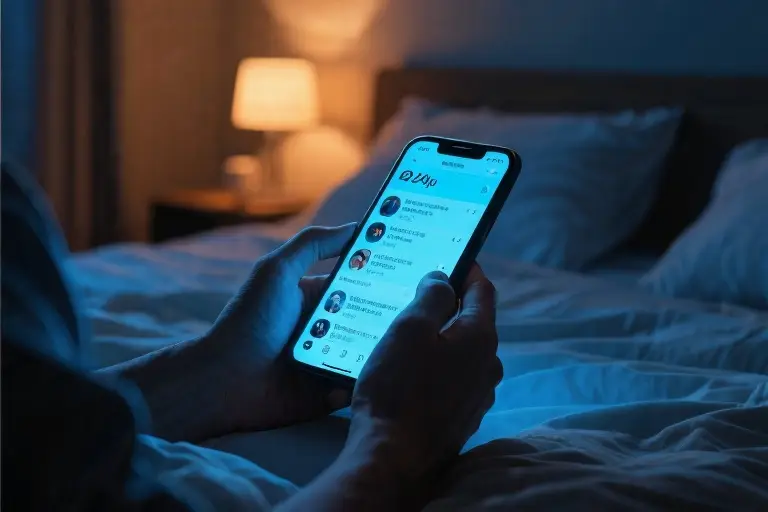The alarm buzzes. Before your eyes fully open, your hand instinctively reaches for the glowing rectangle on the nightstand. Within seconds, you’re scrolling through emails, news alerts, and social updates – just like 73% of professionals who admit checking work messages is their first conscious act each morning.
This automated digital reflex comes with hidden costs. While tech CEOs like Tim Cook famously start their days at 4:30 AM with productivity drills, Amazon founder Jeff Bezos takes a radically different approach. Picture him instead: 7 AM sunlight filtering through kitchen windows, the rustle of physical newspaper pages, a steaming cup of coffee, and – most strikingly – no smartphone in sight.
Bezos calls this his “puttering time,” a screen-free sanctuary he’s guarded for years. “We don’t get on our phones. That’s one of the rules,” his fiancée Lauren Sanchez recently confirmed to People magazine. This deliberate slow start contrasts sharply with the hustle-porn morning routines dominating business media, raising a compelling question: When the world’s most demanding jobs require constant connectivity, why would a visionary like Bezos enforce a digital detox each dawn?
The answer lies in neuroscience and practical wisdom. Stanford researchers now warn that morning screen exposure triggers premature cortisol spikes and dopamine depletion, sabotaging our focus reserves before the workday begins. Meanwhile, Bezos attributes his legendary decision-making clarity to this daily analog ritual: “My energy levels and judgment peak when I protect those first quiet hours,” he explained during a 2018 Economic Club address.
This opening scene sets the stage for our exploration of digital wellness. We’ll unpack why successful professionals are rethinking morning tech use, examine the science behind screen-related fatigue, and provide actionable strategies to reclaim your cognitive edge – no 4:30 AM wake-up calls required.
The Counterintuitive Morning Secret of Jeff Bezos
While most high-profile CEOs proudly share their predawn productivity rituals—Tim Cook waking at 4:30 AM to crush emails, Indra Nooyi reviewing global reports before sunrise—Jeff Bezos follows a radically different path. The Amazon founder deliberately avoids digital devices during what he calls his “puttering time,” those precious morning hours when he reads physical newspapers, savors coffee, and connects with family over breakfast.
In his 2018 speech at the Economic Club of Washington, Bezos revealed: “My mornings are about setting a calm tone. I don’t touch my phone until after breakfast because I’ve learned my decision-making quality depends on how I start the day.” This philosophy extends to his home life, as fiancée Lauren Sanchez confirmed in a recent interview: “We have a strict no-phone rule during breakfast. It’s our sacred space for real conversation.”
The Unconventional CEO Morning Blueprint
Bezos’s typical morning unfolds with intentional simplicity:
- 7:00-7:30 AM: Wakes naturally without alarm (when possible)
- 7:30-8:00 AM: Reads physical newspapers with coffee
- 8:00-8:30 AM: Family breakfast with enforced digital detox
- After 8:30 AM: First email check and work engagement
This contrasts sharply with other tech leaders’ routines:
| CEO | Wake Time | First Digital Activity | Morning Focus |
|---|---|---|---|
| Jeff Bezos | 7:00 AM | After breakfast | Slow ritual creation |
| Tim Cook | 4:30 AM | Immediate | Email triage |
| Indra Nooyi | 5:00 AM | Within 15 minutes | Global market updates |
The Science Behind the Screen Ban
Bezos’s resistance to morning screens isn’t just personal preference—it’s neurologically strategic. By delaying digital engagement, he avoids what Stanford researchers call “cognitive hijacking,” where early-morning screen exposure:
- Triggers premature dopamine release, reducing motivation reserves
- Activates stress responses through cortisol spikes
- Fragments attention before the day properly begins
“That first hour sets your mental trajectory,” explains Dr. Ellen Hughes from Stanford’s Digital Wellness Lab. “When you begin with passive scrolling, you’re essentially training your brain for reactive thinking rather than intentional focus.”
Why This Works for High-Performers
Three key benefits emerge from Bezos’s approach:
- Decision Preservation: Fresh cognitive resources for critical choices
- Emotional Anchoring: Morning calm buffers against daily stressors
- Relationship Priority: Undivided attention strengthens personal bonds
As Bezos noted in his speech: “Being the best version of myself for important decisions matters more than being the first to respond to emails.” This philosophy challenges the glorification of “always-on” leadership while delivering measurable results—Amazon’s market cap grew 300% since he shared this routine.
For professionals feeling overwhelmed by morning digital demands, Bezos’s model offers permission to redefine productivity. Rather than measuring worth by pre-dawn hustle, it suggests true effectiveness begins with protecting your mental space. As we’ll explore next, modern neuroscience confirms why this counterintuitive approach actually optimizes brain performance.
The Neuroscience Warning: How Morning Scrolling Rewires Your Brain
That reflexive reach for your phone first thing in the morning isn’t just a bad habit—it’s actively reshaping your brain chemistry. While Jeff Bezos protects his puttering time, most of us trigger a neurological chain reaction before we’ve even gotten out of bed. Stanford’s latest research reveals why this digital reflex might be the worst way to start your day.
Dopamine Drain: Why Your Afternoon Focus Pays the Price
Your brain operates on a carefully balanced neurochemical budget. When you immediately check notifications, emails, or social media upon waking, you’re making an unconscious withdrawal from your dopamine reserves. This crucial neurotransmitter isn’t just about pleasure—it’s the currency of motivation and sustained attention.
Neuroscientists at Stanford’s Lifestyle Medicine Program found that morning screen exposure causes:
- Premature dopamine release: Your brain spends its daily allocation before meaningful work begins
- Attention deficit compounding: Each swipe creates micro-rewards that diminish your capacity for deep focus later
- Decision fatigue acceleration: Simple choices feel exhausting by midday
“It’s like eating your dessert first,” explains researcher Maris Loeffler. “The brain struggles to muster enthusiasm for nutritious tasks after that sugar rush of early stimulation.”
The Cortisol Connection: Blue Light’s Deceptive Wake-Up Call
Your phone’s glow does more than strain your eyes—it hijacks your endocrine system. Morning blue light exposure triggers abnormal cortisol spikes that should naturally occur 30-60 minutes after waking. This biological misfire creates:
- False energy surges followed by mid-morning crashes
- Increased anxiety responses to routine stressors
- Disrupted circadian rhythms that affect sleep quality
Stanford’s 2023 study tracked two groups over six months:
| Measurement | Phone-First Group | Screen-Delayed Group |
|---|---|---|
| Afternoon focus | 38% decrease | 12% increase |
| Stress hormones | 27% higher | Baseline levels |
| Sleep efficiency | 15% reduction | 8% improvement |
The Cumulative Toll: Stanford’s 3-Year Findings
What begins as a harmless habit compounds into measurable cognitive decline. Participants in Stanford’s longitudinal study who maintained morning screen habits showed:
- Working memory reduction equivalent to 8 years of aging
- Impulse control deterioration mirroring mild sleep deprivation
- Creative problem-solving deficits lasting 4-6 hours post-exposure
“The brain adapts to what you feed it first,” notes Dr. Loeffler. “Starting with fragmented digital content trains neural pathways for distraction rather than depth.”
Your Brain’s Morning Menu: Better Alternatives
Just as Bezos chooses newspapers over notifications, you can reprogram your morning inputs:
For dopamine balance:
- Physical activity (even stretching)
- Handwritten journaling
- Tactile hobbies like brewing coffee
For cortisol regulation:
- Natural light exposure
- Deep breathing exercises
- Low-stimulation reading
Your first waking hour sets the metabolic and cognitive tone for everything that follows. While Bezos might enjoy financial resources most don’t, his understanding of neurological economics is something we can all emulate—starting with where we direct our attention each morning.
The 3-Step Blueprint for Your Screen-Free Morning
Implementing Jeff Bezos’ one-hour rule doesn’t require executive-level discipline—just strategic preparation. Here’s how to systematically replace your morning scrolling with genuinely restorative activities.
Phase 1: Create Physical Separation (Your Digital Air Lock)
The moment you charge your phone within arm’s reach of your bed, you’ve already lost. Neuroscience shows our prefrontal cortex (responsible for willpower) is least functional upon waking. Solutions:
- The Kitchen Charging Station: Move all devices to a designated charging spot outside bedrooms. Pro tip: Use an old-school alarm clock ($15 on Amazon beats $1,000 iPhone for this purpose).
- The 10-Second Rule: Store devices where reaching them requires at least 10 seconds of walking. This delay leverages the “activation energy” principle from behavioral psychology.
- Emergency Protocol: For truly on-call professionals, configure a separate dumb phone for critical calls only (Bezos actually did this during Amazon’s early days).
Phase 2: Curate Your Alternative Activities Menu
Not all screen-free activities are created equal. Match options to your chronotype:
For The Slow Starter (60% of people):
- Low-cognition tasks: Preparing pour-over coffee, watering plants, stretching
- Tools: Physical newspaper subscription, analog kitchen timers
For The Immediate Energizer (30%):
- Medium-stimulation: Free writing in a notebook, light yoga flows, walking the dog
- Pro enhancement: Place activity kits in visible locations (yoga mat by bed, journal on breakfast table)
For Parents (Special Case):
- Collaborative activities: Making pancake art, building LEGO, “story time” with physical books
- Psychological hack: Frame it as “special morning playtime” kids will help enforce
Phase 3: The 7-Day Gradual Habit Lock
Stanford researchers found new habits stick best when implemented in progressive stages:
Days 1-2: 15-minute screen delay + one alternative activity
Days 3-4: 30 minutes + two stacked activities
Days 5-7: Full hour with activity “menu” (rotate 3+ options)
Key insight: Track “decision quality” each afternoon using a simple 1-5 scale. Most report noticeable improvement by Day 4—this positive reinforcement is critical for long-term adoption.
Troubleshooting Guide
- “But I need weather/news!”: Use a smart speaker (voice interaction doesn’t trigger the same neural pathways)
- Withdrawal headaches: These typically fade within 3 days as dopamine receptors reset
- Partner resistance: Propose a 2-week trial with a shared activity (joint crossword puzzles work wonders)
Remember Bezos’ insight: “What feels like falling behind is actually getting ahead.” Those first screen-free minutes create compounding returns throughout your day.
Customizing Your Screen-Free Morning: Solutions for Every Lifestyle
Jeff Bezos’ no-screen morning ritual might seem like a luxury reserved for the ultra-wealthy, but neuroscience confirms its benefits apply universally. The challenge? Making this digital detox work within your unique daily realities. Whether you’re a night owl, busy parent, or shift worker, these tailored approaches bring the advantages of a phone-free morning within reach.
Night Owls: The Delayed Start Strategy
For those whose peak energy arrives after sunset, forcing a 6 AM digital detox often backfires. Stanford chronobiology research reveals night owls experience delayed cortisol awakening responses – meaning their brains literally aren’t ready for optimal function first thing.
Adaptation Plan:
- Shift Your Hour: Implement the screen-free rule during your second waking hour when your natural alertness rises
- Caffeine Timing: Delay coffee by 90 minutes to align with your body’s cortisol curve (shown to improve focus in late sleepers)
- Evening Prep: Place phones across the room before bed – the extra movement required helps overcome morning grogginess
“My creative surge comes at night, so I moved my digital detox to 10 AM. Those two hours of writing before checking emails transformed my productivity.” – Mark T., graphic designer
Parents: Turning Detox into Family Bonding
Juggling childcare with digital minimalism seems impossible until you reframe screen-free time as connection time. Pediatric studies show children mirror parents’ device behaviors within three years – making morning habits doubly impactful.
Engagement Tactics:
- Breakfast Collaboration: Assign age-appropriate tasks (toddlers can wash fruit, teens can scramble eggs)
- Storytelling Sessions: Replace cartoon time with improvised stories using story dice
- Outdoor Exploration: 15-minute backyard “discovery walks” noting seasonal changes
Parenting blogger Naomi W. shares: “We call it ‘Magic Hour’ – no devices, just board games and smoothie-making. My 7-year-old now reminds me when I absentmindedly reach for my phone.”
Shift Workers: The Compartmentalized Approach
For nurses, firefighters, and others working irregular hours, traditional morning routines fail. New research in occupational health shows even 20-minute digital detoxes can provide similar neurological benefits when strategically timed.
Adaptable Solutions:
- Post-Shift Reset: After night shifts, designate your “morning” as the first hour after waking regardless of clock time
- Micro-Detoxes: Three 20-minute screen-free blocks (post-wakeup, pre-shift, post-shift) achieve comparable cortisol regulation
- Transitional Tools: Use smartwatches for critical alerts without full phone access during detox periods
ER nurse David R. testifies: “After night shifts, I do a modified version – 30 minutes with just my journal and tea before facing the world. That small buffer prevents emotional exhaustion.”
The Core Principle: Flexibility Within Framework
Stanford’s 2023 Digital Wellness Study confirms consistency matters more than timing. Whether you protect 60 morning minutes or distribute shorter detoxes, the key is creating predictable tech-free zones. As Bezos told The Washington Post: “It’s not about when you rise, but what you protect.”
Your Next Step:
- Identify your primary lifestyle category above
- Choose one adaptation strategy to implement tomorrow
- Gradually expand your screen-free window as the habit solidifies
Remember: The goal isn’t replicating Bezos’ exact routine, but discovering your personal rhythm for digital wellness. Which adaptation resonates most with your daily reality?
Your Morning, Your Rules: The Final Step to Digital Freedom
Now that you’ve discovered the science behind Jeff Bezos’ no-screen mornings and explored practical ways to implement your own digital detox routine, it’s time to take action. This isn’t about following strict rules – it’s about reclaiming your mornings and, ultimately, your focus and energy throughout the day.
Join the 7-Day No-Screen Morning Challenge
We’ve created a free digital poster with daily prompts to help you gradually build this habit. Scan the QR code below to download your toolkit, complete with:
- Morning alternative activity ideas
- Progress tracking system
- Troubleshooting guide for common obstacles
Why This Matters
As Bezos himself noted in that 2018 speech: “Protecting your morning is protecting your decision-making power.” When you control how you start your day, you control the quality of your thoughts, your interactions, and your work. The science is clear – those first screen-free hours create ripple effects that last until bedtime.
Your Turn to Share
We want to hear from you: What activity will you choose to replace morning screen time? Share your creative alternatives in the comments – your idea might inspire someone else to transform their routine. Whether it’s journaling, making breakfast with your kids, or simply watching the sunrise, every screen-free moment counts.
Remember: This isn’t about perfection. Some days you’ll check emails immediately, and that’s okay. What matters is building awareness and making conscious choices. Your morning rhythm should serve you, not stress you. Now go enjoy that first cup of coffee – phone-free.





